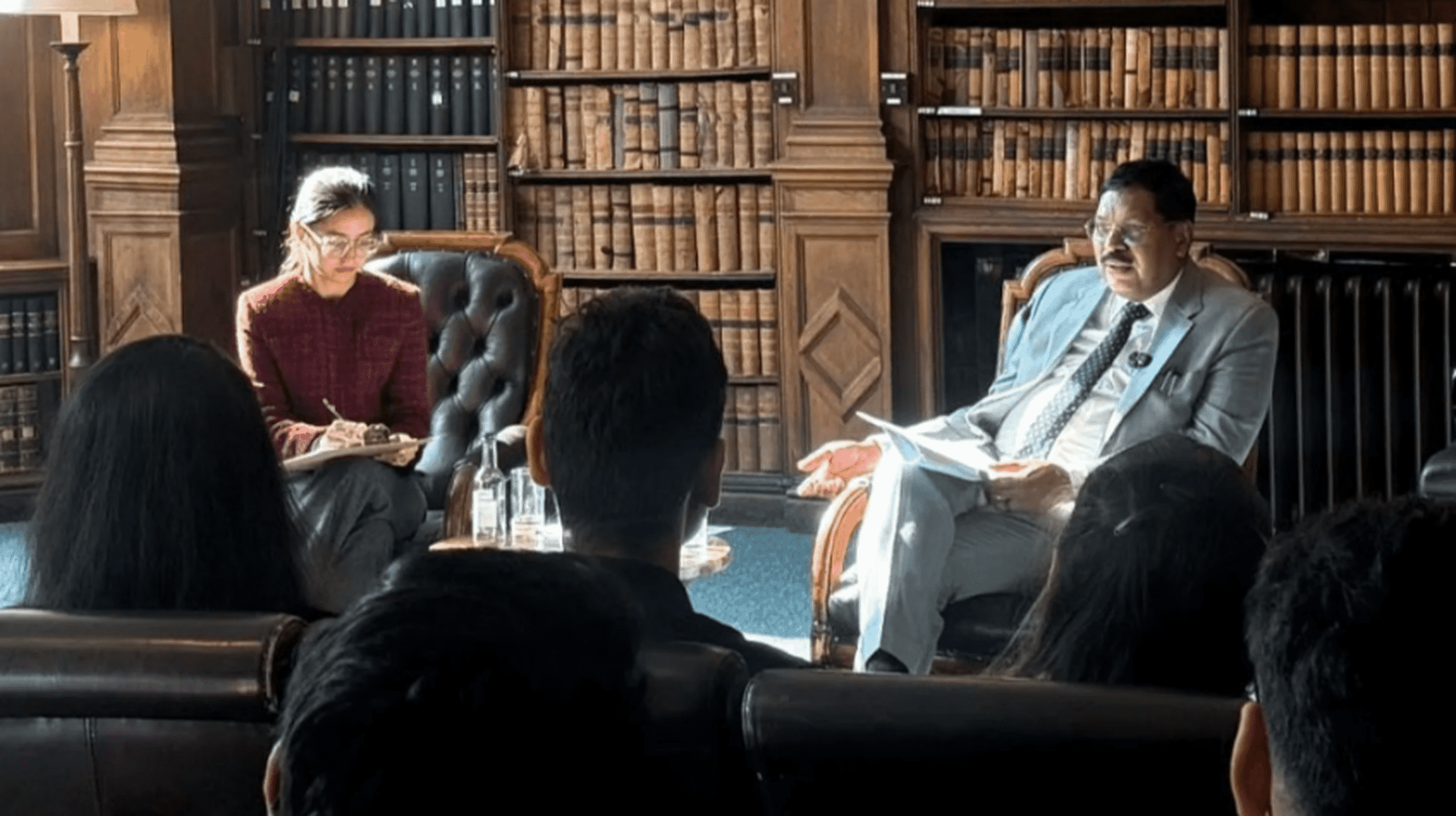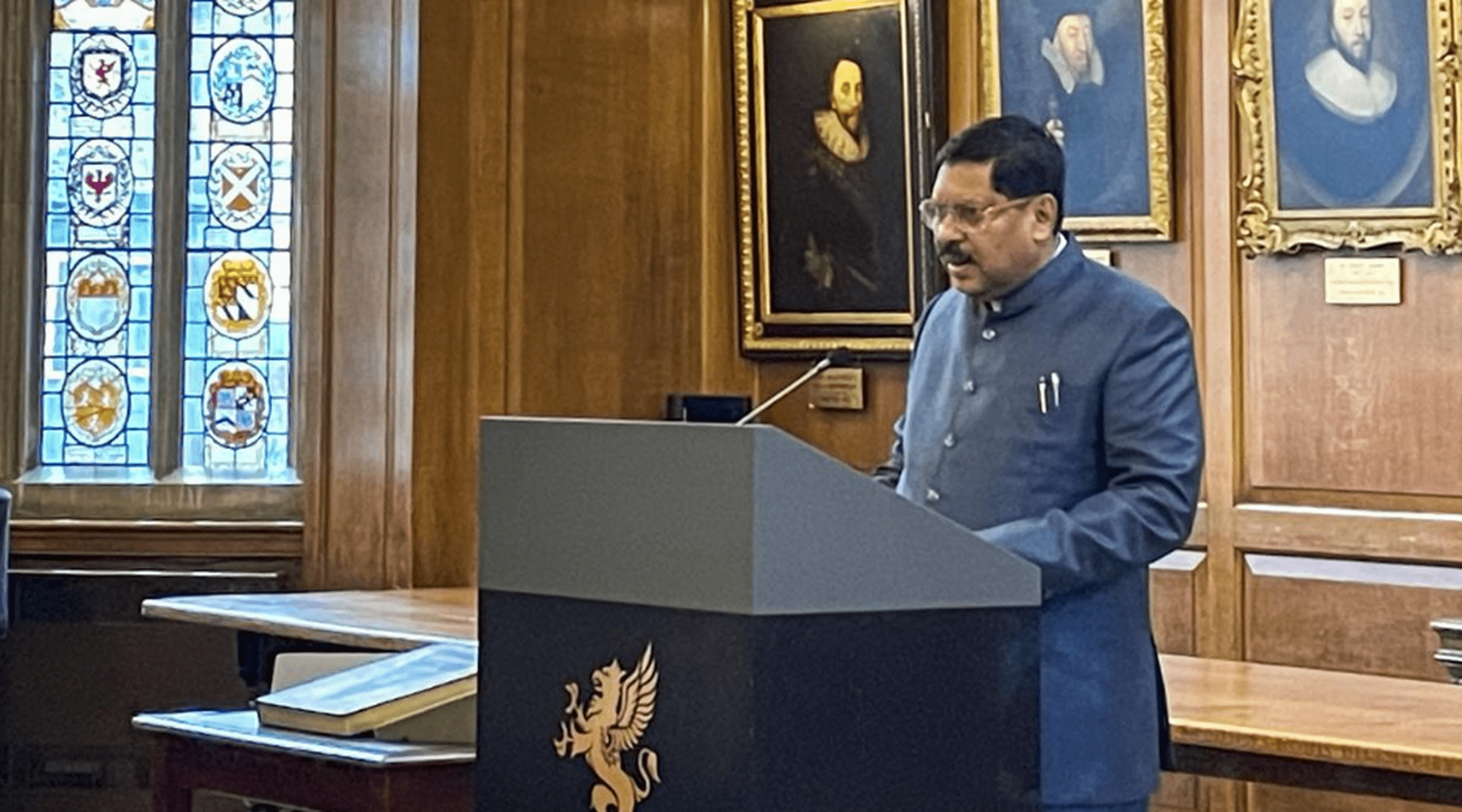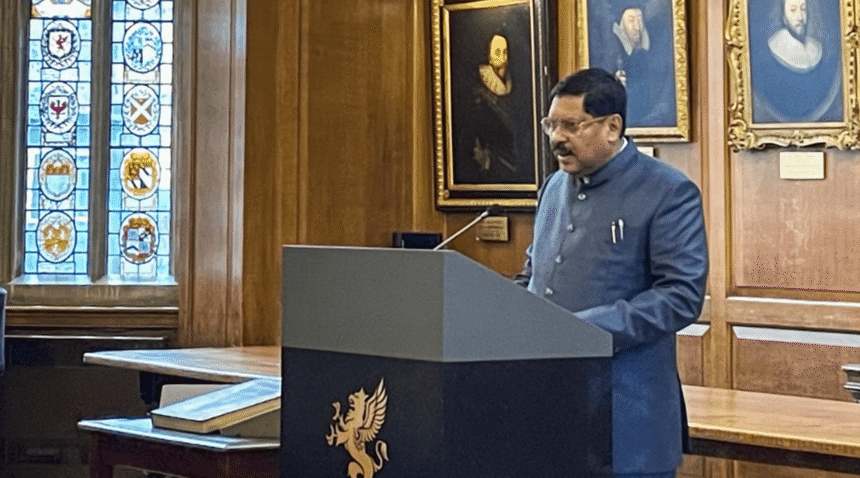1. Introduction: A Landmark Address at the Oxford Union
Constitution in a stirring and deeply reflective address at the prestigious Oxford Union, Chief Justice of India, D.Y. Chandrachud, made a powerful statement that resonates across India’s social, political, and legal landscape. He declared, “The Constitution does not pretend that all are equal in a land scarred by deep inequality.” These words were not merely philosophical but a direct engagement with the lived realities of millions of Indians. By invoking both the harsh truths and the aspirational spirit of the Indian Constitution, CJI Chandrachud offered a profound commentary on the state of justice, equality, and governance in modern India.
2. The Constitution as a Living Document
Chief Justice Chandrachud emphasized that the Indian Constitution is not a cold, impersonal rulebook. “For India’s most vulnerable citizens,” he said, “the Constitution is a feeling, a lifeline, a quiet revolution etched in ink.” This poetic yet potent characterization underlines the transformative power of constitutional values. Rather than being a static legal document, the Constitution functions as a living instrument that evolves with time, shaping and responding to the changing needs of Indian society.
This perspective aligns with the doctrine of constitutional morality that CJI Chandrachud and the Supreme Court have increasingly invoked in recent years. It also reflects Dr. B.R. Ambedkar’s vision of the Constitution as a mechanism of social change, not merely a legal codex.
3. Deep Inequality: The Harsh Reality
By acknowledging that India is “scarred by deep inequality,” CJI Chandrachud called attention to a painful truth. Despite decades of economic growth and constitutional guarantees, stark disparities persist in terms of caste, gender, religion, geography, and socio-economic status. Millions of Indians, especially from Dalit, Adivasi, and minority communities, continue to face systemic exclusion and discrimination.  For the more information click on this link
For the more information click on this link
He implied, does not deny these facts. Instead, it offers a framework to address them. Fundamental Rights like equality before law (Article 14), prohibition of discrimination (Article 15), and the abolition of untouchability (Article 17) aim to redress historic injustices. However, the struggle to translate these rights into real, lived experiences remains ongoing.
4. The Constitution as a Promise and a Struggle
Chief Justice Chandrachud’s speech captured the duality —it is both a promise and a struggle. On paper, it guarantees justice, liberty, and equality. In practice, these values must be fought for, often through litigation, activism, journalism, and civic engagement.
In this sense, becomes a “quiet revolution” in the hands of those who are most marginalized. It is the tool through which a Dalit student can demand education, a tribal community can resist displacement, and a Muslim woman can challenge discriminatory practices. Each assertion of constitutional rights is a small revolution that challenges entrenched power structures.
5. A Message for the Global Community
Delivering this speech at the Oxford Union was not accidental. As one of the world’s oldest debating societies, the Union is a platform that brings global visibility. By choosing this forum, CJI Chandrachud sent a message beyond India’s borders. He reminded the international community that India’s democratic experiment is both unique and fragile. It is an ongoing negotiation between lofty ideals and complex realities.
Moreover, his remarks come at a time when questions about democratic backsliding, judicial independence, and majoritarian politics are being debated globally. By framing as a lifeline for the vulnerable, he emphasized that the judiciary must remain a bulwark against authoritarianism and inequality.
6. Judiciary’s Role in Upholding the Constitution
CJI Chandrachud’s remarks also reflect his broader judicial philosophy. As a judge, he has authored landmark verdicts that expanded rights—for LGBTQ+ individuals (Section 377 verdict), privacy (Puttaswamy case), and women’s rights (entry into Sabarimala). These decisions underscore his belief in a dynamic interpretation of the Constitution.
His Oxford address reiterates that the judiciary’s duty is not just to interpret laws but to ensure that justice reaches those who need it most. He emphasized the role of constitutional courts in promoting “transformative constitutionalism”—a concept that sees the Constitution as a means to usher in social justice.
7. Constitutional Patriotism: A Moral Compass
CJI Chandrachud’s vision is deeply rooted in what political theorists call “constitutional patriotism.” This form of patriotism is not based on ethnicity or religion, but on shared commitment to democratic and constitutional values. When he says is a “feeling,” he invokes this moral-emotional connection to a document that embodies the nation’s highest ideals.
In a deeply polarized and politically charged climate, this message has special relevance. Constitutional patriotism offers a unifying framework that transcends identity politics and promotes inclusive citizenship.
8. The Constitution and the Margins of Society
The most powerful part of the Chief Justice’s speech was his focus on the margins of society. He spoke of how becomes a personal experience for the poor, the women, the religious minorities, and the oppressed castes. For them, it is not just law—it is hope.
He noted that for a manual scavenger or a bonded laborer, the is often the only shield they have against exploitation. Similarly, for sexual minorities and persons with disabilities, constitutional recognition has enabled a more dignified life. This focus on the margins reflects the soul , as envisioned by its makers.
9. Constitutional Promises vs Political Realities
While the promises dignity, equality, and freedom, political and administrative systems often fall short in delivering these. CJI Chandrachud implicitly critiqued this gap between constitutional aspirations and ground realities. Whether it’s the delay in justice delivery, police brutality, or exclusion from welfare schemes, the disconnect is evident.
He seemed to caution against using the merely as a tool for rhetoric while ignoring its ethical imperatives. Upholding the means not just protecting its text, but honoring its spirit.
10. Youth, Legal Education, and Democratic Values
The Chief Justice also addressed students and youth, urging them to embrace constitutional values. As future citizens, bureaucrats, and leaders, their understanding of the is crucial. Legal education, he said, should not be limited to technical knowledge but must instill a sense of justice and empathy.
He highlighted how young law students, through legal aid clinics and PILs (Public Interest Litigations), have been instrumental in pushing the constitutional agenda. This empowerment of youth is key to sustaining democratic vitality.  For the more information click on this link
For the more information click on this link
11. Global Echoes: Comparative Constitutionalism
By speaking at Oxford, CJI Chandrachud also linked India’s constitutional journey with global experiences. Democracies around the world are grappling with similar issues—inequality, polarization, erosion of rights. The Indian experience, though unique, offers lessons in resilience and adaptability.
He noted that constitutionalism must go beyond legal texts to embrace values like fraternity, compassion, and solidarity. This is a reminder that are not merely national instruments but part of a global human rights architecture.
12. Conclusion: A Call to Conscience
Chief Justice Chandrachud’s Oxford speech was more than a ceremonial address—it was a moral call to conscience. By acknowledging inequality, upholding the Constitution as a source of hope, and emphasizing the judiciary’s role in transformative justice, he outlined a vision that is both realistic and aspirational.
In a time when institutions are under strain and democratic values are being tested, his words offer a guiding light. in his telling, is not an abstract ideal but a living reality, especially for those who suffer the most. And in that truth lies both its strength and its challenge.
Final Word
The Chief Justice’s address is a reminder that the journey of justice is long and uneven. But as long as is held not just in our libraries but in our hearts, there is hope. In a land scarred by deep inequality, the may not pretend all are equal—but it insists that all must be treated with equal dignity. That insistence is what makes it a revolutionary document. ALSO READ:- Trump Criticizes Zelenskyy Over Crimea: Claims Ukraine’s Resistance Is Prolonging War 2025





